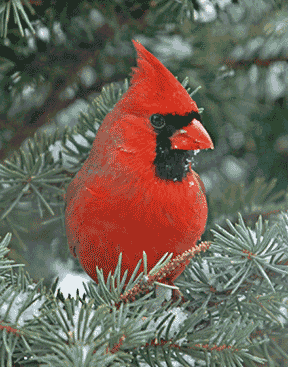|
|
 |
||||||
|
|||||||
Great Backyard Bird Count Sets a RecordCardinals lead the listby Dotty Holcomb Doherty
Birders from all over North America looked out their windows and tramped through woodlands, fields and wetlands in mid-February to make the 10th annual Great Backyard Bird Count a record-breaking event. Bird counters submitted an unprecedented 80,636 checklists —19,587 more than the highest number ever recorded — tallying over 11 million birds of 627 species. Sending another record tumbling, enthusiastic birders sent in 1,944 checklists in a single hour. Maryland birders posted 2,013 checklists — their second highest total since the count began — earning three places in the top 10 lists in two categories. In their best showing ever, Maryland ranked fourth in states and provinces reporting the most birds, with 511,089 individuals, more than twice as many as counted last year. Tens of thousands of snow geese, red-winged blackbirds and grackles put two Maryland towns, Willards and Centreville at fourth and sixth in localities reporting the most birds. Anne Arundel and Calvert county birders added 425 checklists, up from 272 last year. Seven towns sent in 12 to 26 more lists than last year, and six towns were new this year, adding 31 more lists to the count. Cardinals topped the North American list for the bird most reported, showing up on 45,803 checklists, followed closely by dark-eyed juncos. Robins charged to the lead for the most numerous bird, with over two million seen. This abundance of data allows scientists to track populations of birds and look for trends and patterns. Last year’s data, compared with previous years, found pine warblers, orange-crowned warblers and tree swallows wintering farther north. Unlike other warblers and swallows that rely on insects for food, these species’ varied diets allowed them to take advantage of warmer winter weather, expanding their range. Migration patterns of whooping cranes, oscillating populations of great gray owls and increasing numbers of brown creepers are just a few of the patterns scientists are studying based on data collected by backyard birders. For more information, see www.birdsource.org/gbbc. |
|||||||
|
|
|||||||
|
© COPYRIGHT 2004 by New Bay Enterprises, Inc. All rights reserved. |

